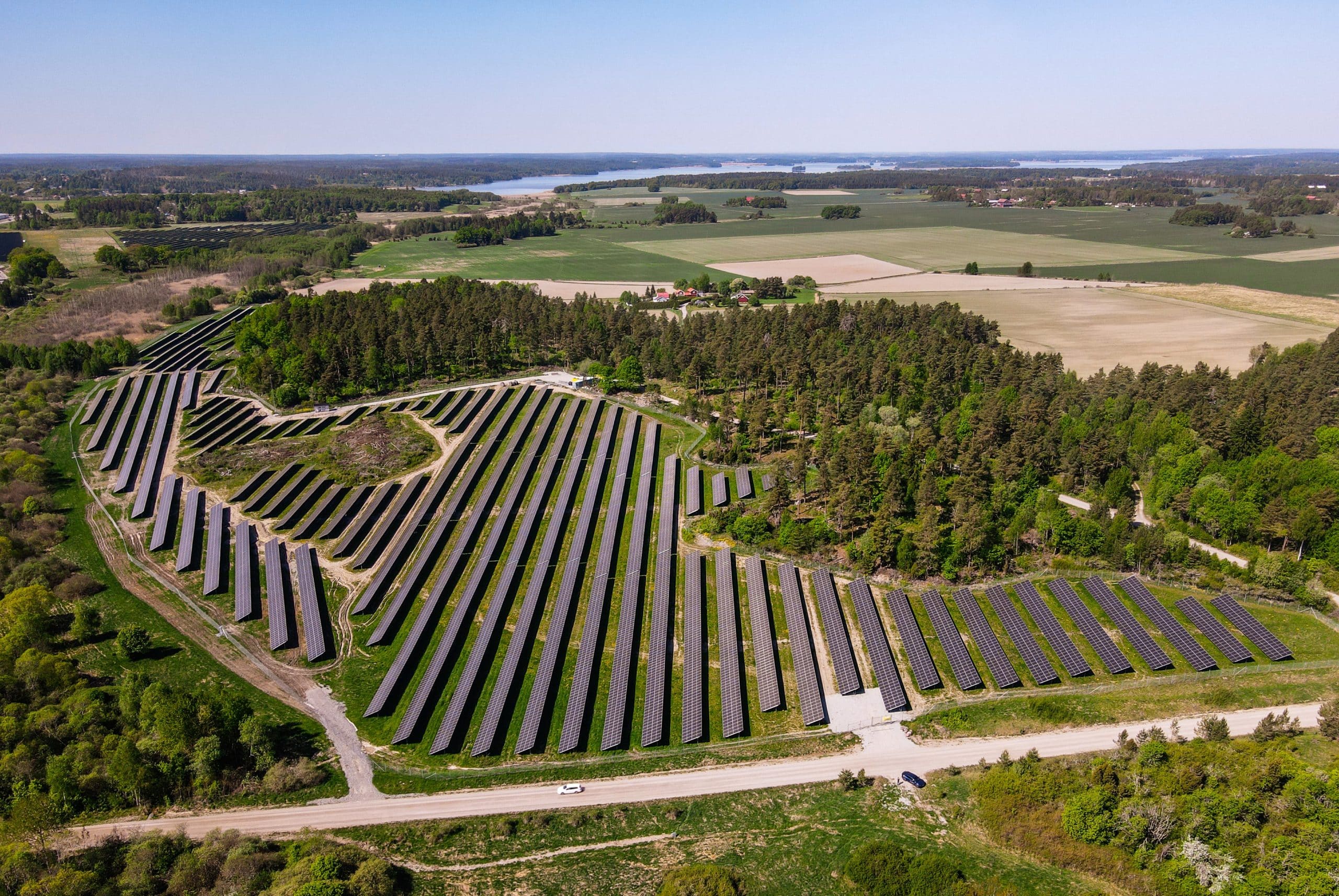When HSB Solpark in Strängnäs opened in the summer of 2020, it was by far the largest in Sweden. Since then, much has happened in the Swedish solar cell market and other parks have overtaken it in terms of size. Now, after a second phase of expansion, the solar park is once again the largest in Sweden with a total installed capacity of just over 21 MW, generating electricity equivalent to the annual needs of 7,500 apartments.
Since mid-May, HSB Solpark in Strängnäs can once again claim to be Sweden’s largest solar park. In total, the park currently has an installed capacity of just over 21 MW, and will supply about 7,500 apartments within HSB with fossil-free electricity. The park has been expanded to 45 hectares.
Solar power is fossil-free and for HSB as a social actor this is a contribution to a sustainable future. It feels great to see the HSB logo on a solar park, says Jon Leo Rikhardsson, CEO of HSB Södermanland.
Delivering climate and housing benefits in HSB
The initiative for the solar park comes from HSB Södermanland, which wanted to find a way to benefit both the climate and its members. Already in 2016, work began on equipping suitable roofs with photovoltaic installations. However, in order to make a real impact, they saw a need to scale up, so the initiative for a ground-based solar park was taken.
The solar park is structured according to the same principles as a tenant-owner association where HSB tenant-owner associations trade shares according to the need for property electricity. The housing associations thus buy electricity at a fixed electricity price based on the investment cost without any intermediary. Initially, this was a concept offered to housing associations in Södermanland, but after great demand, the concept has now been rolled out on a broad front, which means that interested associations throughout the country have the opportunity to buy electricity produced in the solar park. At present, HSB Mölndal, Värmland, Södertörn, Södertälje, Kristinehamn and Gothenburg have bought shares in the solar park.
The great interest from our members shows that solar energy is an important part of the future and we are happy to be able to enable more people to use fossil-free solar power. However, we are not done yet and want to build more solar parks. Unfortunately, finding suitable land is a challenge, says Jon Leo, CEO of HSB Södermanland.
EnergiEngagemang is one of Sweden’s leading solar cell companies and is responsible for the design and construction of the solar park. According to them, the potential is very high, but a balance needs to be struck between different actors and interests competing for land.
We are very happy to show together with HSB that solar energy is something to be reckoned with. It is the only form of energy that can be rapidly expanded on a large scale, which is needed in southern Sweden in particular. The industry aims to install 30 GW by 2030, which is 15 times the amount installed so far. Here we will help lead the developmentsays Jonas Helander, CEO of EnergiEngagemang.
Responsible for finding land for solar parks at EnergiEngagmang is Oskar Molin, project development manager for solar parks, who points out that there are many types of land that could be interesting for building solar parks:
Old arable land that is no longer arable or fallow is usually the easiest to build on, but we also look at forest land. While piling in forest land is a bit more technically challenging than in a field, given the need for new and clean energy production, I hope more people will start to see the potential of the forest, he says.
Biodiversity is important
From the early stages of planning for the park, it was clear that biodiversity and how the solar park would affect it was important. At the time, there were no similar large-scale solar parks in Sweden, so it was decided to take the lead in investigating how solar parks can promote pollination and biodiversity. A specific seed mixture for the purpose was developed and together with SLU, the development of biodiversity is now measured and analyzed annually.
This year, a further step in improving the conditions for biodiversity is being taken by allowing sheep to graze in the solar park. As well as benefiting biodiversity, this eliminates the need for manual mowing. It is also a way to maximize land use by combining agriculture and solar farming on the same area.
Electricity equivalent to the annual needs of 7500 apartments
In phase two, HSB Solpark has been expanded with 13,068 solar panels, each with an output of 540W. A total of 22 inverters have been added, enabling electricity equivalent to the annual consumption of 7,500 apartments to be produced there annually.

